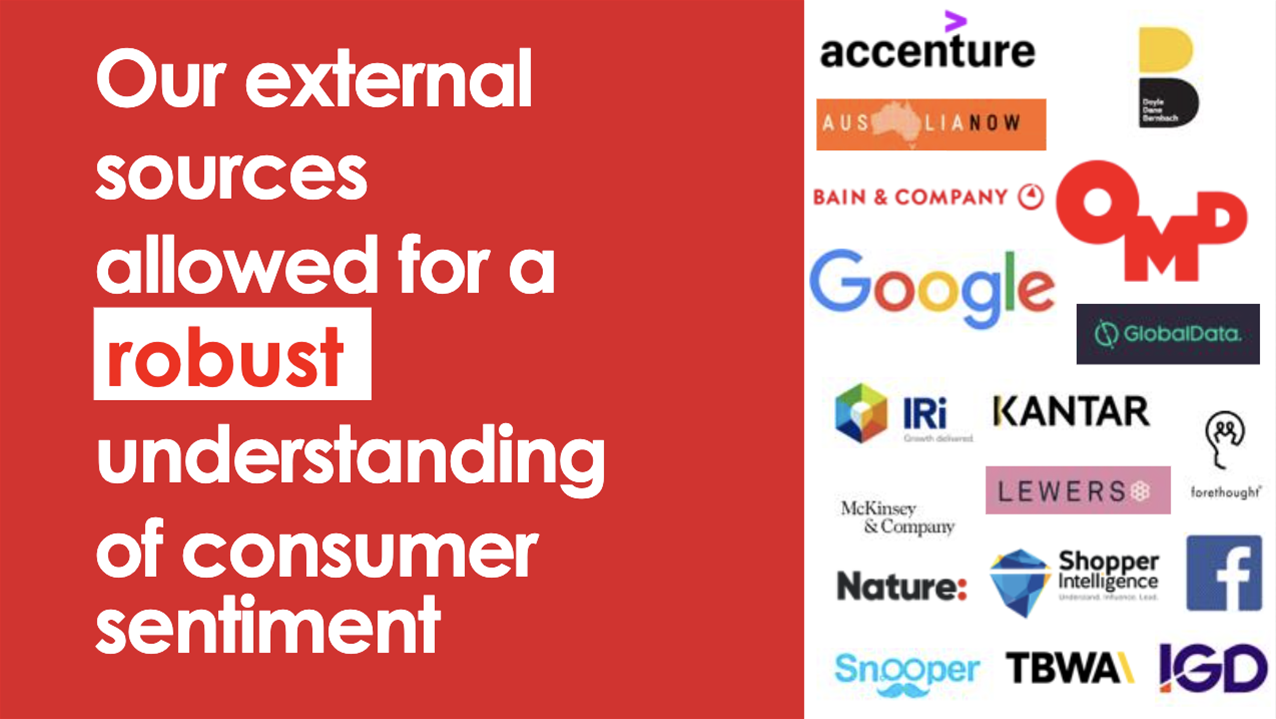Coles Group “triangulated” data from up to 18 different international sources during the pandemic to stay ahead of panic buying trends and maintain stock levels amid fluctuating demand.

Chief marketing officer Lisa Ronson told the Melbourne Business School’s business analytics conference that data analytics and customer insight had Coles in a “really solid position” even pre-Covid.
“We were really focused on our customer metrics to drive business growth,” Ronson said.
“Our supermarket sales trajectory was on a really solid path and also our NPS [net promoter score] was improving dramatically, and that’s because we were more customer-centric and engaging with our customers more than we ever had for recent history.
“They were [also] really engaging with us with their problems, which we recognised through our research and data analytics program, and were trying to solve.”
But Ronson said data analytics and insight took on an elevated role during the pandemic, helping Coles to manage its supply chain and understand changes in shopper behaviour.
At the height of pandemic-related lockdowns, Ronson said that Coles’ leadership team was examining its own data to support its decision-making multiple times a day.
“Instead of going weeks and months to make a big decision, often we were making decisions very frequently, and you would have heard my boss [CEO] Steven Cain talk about that with me.
“Twice a day, as a leadership team, we would look at the data and the insights that we had available to us, and we do have a lot.
“Looking at just the data and insight capabilities at Coles, we’ve got several data sources that we were looking at on a day-by-day, sometimes hour-by-hour basis, because consumer [behaviour was] changing that frequently.
“We had to be really focused on all our different datasets, whether it be our sales data, our market share data, or some of our customer panel data like Coles Circle where we’ve got 18,000 Coles customers that we pose different questions and scenarios and get instant feedback.”
Coles was able to supplement its own datasets with data from a range of international partners with which it does business; the retailer showed up to 18 different global sources of data it taps on an accompanying slide.
“We looked to some of our global partners, some of the biggest brands in the world, to get [an idea of] what was going on internationally. These partners were also doing a lot of robust surveys,” Ronson said.
“That led to my research and insights team having a lot of data at their disposal during this time, but what was absolutely critical - and this sounds really obvious but when you’re swimming in data in an uncertain time and you’re making decisions so quickly - was taking the insights out of that and putting them into themes or buckets … that we could then action our decision-making on.”
Ronson said the international data sources provided substantial intelligence around panic-buying experiences overseas, enabling Coles to prepare its own suppliers and supply chain for the same trends to be seen in Australia.
After the panic buying of toilet paper came the pasta, rice, flour.
“We got a lot of rich information for some of the markets that had gone before us around [panic-buying] going from toilet paper to pasta to rice,” Ronson said.
“What our buyers did was look at some of those trends internationally and make sure that we then worked with our supply chain and our suppliers to ensure that we had enough stock.
“With toilet paper, we were working directly with the toilet paper manufacturers, a lot of which are in Australia. The factories were going 24x7 to make sure that we could increase supply.”
The combination of in-house and external data sources allowed Coles to react to changing market conditions, Ronson said.
“It was a combination, triangulating a number of different data sources to try and make sure that we had supply of the next thing that may have got panic bought or [that there may be] anxiety around not getting access to,” she said.
Ronson added that insights also helped inform ways that Coles was able to assist customers during the pandemic, such as by providing meal ideas for customers that had panic-bought too many ingredients, and creating assistance guides for shoppers accustomed to physical stores but going online for the first time.




_(20).jpg&h=140&w=231&c=1&s=0)
_(22).jpg&h=140&w=231&c=1&s=0)
.png&h=140&w=231&c=1&s=0)





 iTnews Executive Retreat - Security Leaders Edition
iTnews Executive Retreat - Security Leaders Edition












_(1).jpg&h=140&w=231&c=1&s=0)



